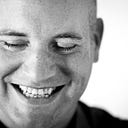0.3–0.5 Methodology

0.3 Experience
Before coming to graduate school, I spent eleven years working at a graphic design/brand strategy firm. We used qualitative and quantitative process models for integrated branding strategies. Although I see the value in this research I became frustrated with the imbalance clients put on quantitative research versus qualitative research and creative work. Quantitative research marginalized certain creativity and limited experimentation through design making. One of the main reasons I came to graduate school was to investigate my own creative methodology. In How do you design? Graphic designer Hugh Dubberly evaluates a typology of over one hundred descriptions of design and development processes in hopes to foster debate about design and development processes. Is there a system that works better than another? I suspect that they all can work. Creative methodologies are moving targets. In order to stay creative and relevant, designers need to adapt and evolve — that seems to be the only constant in design.
0.4 Empirical Methodology
Empirical evidence is information that is derived from the trials and errors of direct experience rather than controlled experiments with expected outcomes. Empirical research is a way of gaining knowledge by means of direct and indirect observation or experience. The structure of my empirical methodology is organized into 3 parts:
1. Intuition enables me to understand that my surroundings are the primary source for design inspiration.
2. Transformation is formulated by using tools such as still photography and video to capture my intuitions. Then, I distill, edit, and reflect on the captured footage in order to uncover the essence of the original inspiration.
3. Feedback occurs when the transformed content is presented in a new context — whether it be a printed matter, a video vignette, an interactive screen project, or a physical installation. Although the process is based in science, it is anything but rigid or didactic. I do not seek predetermined outcomes so much as the awareness necessary to inspire further explorations — whether mine or that of others — in this method.
All artists and designers have some type of creative process, but I believe as Buckminster Fuller states, “If each project is unique, the process should be unique.”
0.5 Feedback Loop
According to Robert Mattison, “Robert Rauschenberg’s greatest strengths are his instinctual responses to images, materials and formal structures and his ability to absorb the complex surface of life.” My work reflects a similar immediacy and reaction to an ever-changing environment. I use feedback from my environment as well as feedback from the designed form transformed from that environment. I am not necessarily looking for a finished outcome but for an action that will inspire me or someone else to take the next step in the method.
Originally published at http://jamesjgrady.com on June 28, 2012.
